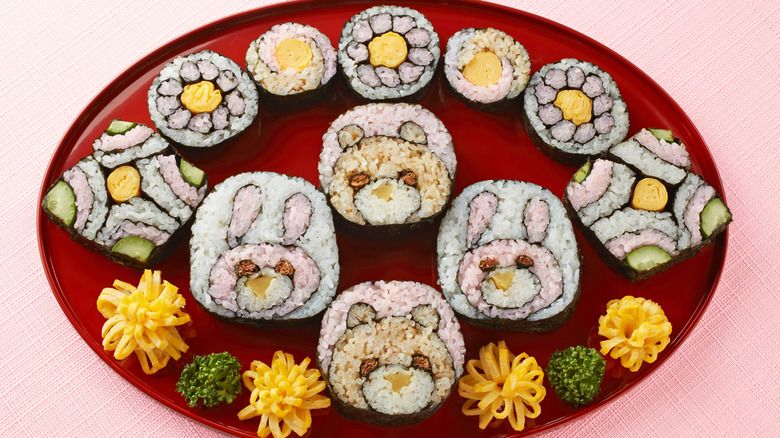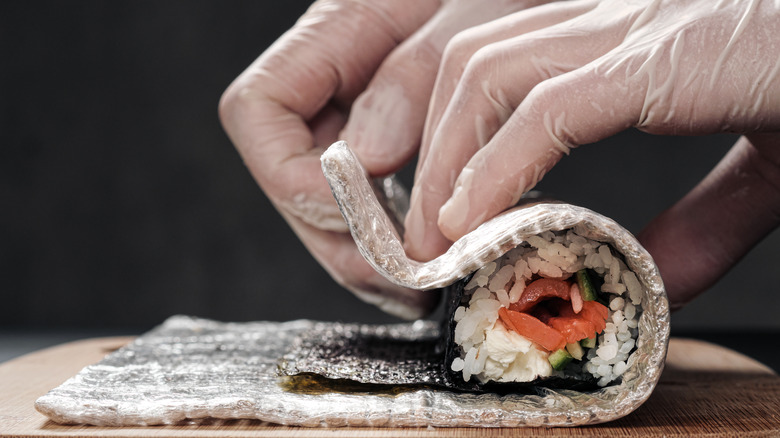Kazari-Zushi Is The Gorgeous, Decorative Sushi You Should Know About
You can't deny that a platter of freshly made sushi is beautiful to look at. The artfully constructed rolls made of colorful nori, rice, proteins, vegetables, and garnishes make it almost too beautiful to eat. The sushi rolls that many are accustomed to are called maki rolls or makizushi. This is sushi that's composed of cylinder-shaped vinegared rice filled with seafood and/or vegetables, wrapped in seaweed sheets or nori. There is another type of maki that is the epitome of food art, known as kazari-zushi (also called deco rolls, deco maki, or kazari makizushi). This type of sushi is made by placing traditional sushi ingredients into a compacted maki roll in such a way that when the roll is sliced into pieces, a design is formed. The designs range from flowers and hearts to animals and even words.
Not much is known about the origins of kazari-zushi but we do know that Maki style sushi was created in Tokyo in the 17th century as a way to offer a portable rice and fish meal to people on the go. It naturally evolved to the beautiful, sophisticated food it is today. Modern, visually-appealing maki rolls and kazari-zushi both exemplify the Japanese concept of washoku, or the harmony of food being both beautiful and nutritious. Kazari-zushi often utilizes rice that is lightly colored to create specific effects but otherwise relies on common sushi ingredients like egg, seaweed, and colorful vegetables to design an image.
You'll probably have to DIY
When it comes to finding kazari-zushi, you're typically not going to be able to find it on the menu of any random sushi restaurant. After all, the process of putting together these edible works of art can be very time-consuming and isn't often conducive to a bustling restaurant atmosphere. You're much more likely to experience the specially-made dish in a sushi-making class that offers lessons on how to make it.
There are Japanese cultural centers and sushi-making workshops in places like New York City that offer specific classes on kazari-zushi. If you can't find a class specific to the topic, it's worth reaching out to classic sushi classes to see if it's something it is willing to teach. Often, you'll find that these businesses will be willing to do private classes. In Japan, you can also find such classes. Once you have learned the basics, you should be able to recreate the rolls in your own kitchen with the right tools and ingredients. Kazari-zushi is delightful for kids due to its whimsy but you'll find that even adults are awed by this beautiful and often adorable style of food.

